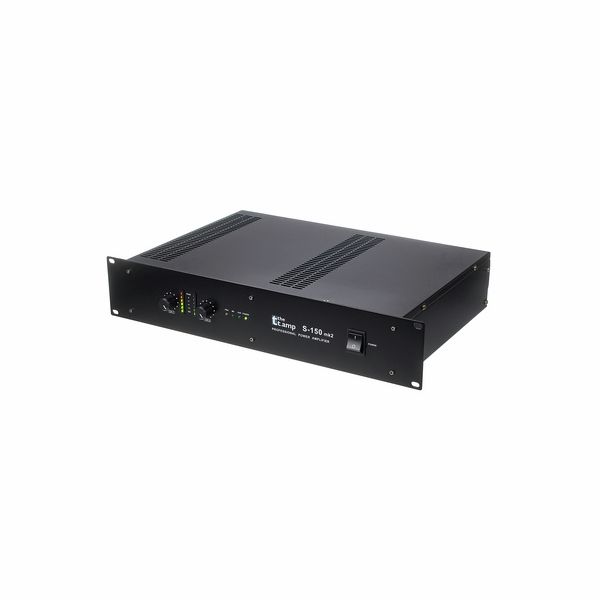Etwas wirklich negatives kann ich über den T.Amp S-150 nicht sagen.
Aber ein paar kleine Kritikpunkte gibt es schon:
Leider sind die Potis gerastert, was ein wirklich genaues Einstellen der zwei Kanäle leider wirksam unterbindet.
Außerdem sind die Schalter für den Betriebsmodus und die Eingangsempfindlichkeit bei meinem T.Amp nicht mit der Hand verstellbar,
weil diese etwas hinterhalb der Rückplatte liegen, wo man mit den Fingern natürlich nicht hinkommt, aber ein kleiner Schraunbendreher hilft hier.
Ob das mit den Schaltern so sein sollte, oder nicht, kann ich leider nicht sagen. Falls nicht, spricht es auf jeden Fall nicht für die Serienkonstanz.
Andererseits schützt es vor unabsichtlichem verstellen, also hat sich vielleicht sogar jemand etwas dabei gedacht.
Aber das war´s im großen und ganzen schon mit den negativen Punkten.
Man bekommt für sehr wenig Geld eine sehr solide verarbeitete Endstufe. Auch wenn das mit den Potis und den Schaltern nicht optimal ist, erinntert der Rest der Endstufe an einen Panzer.
Auch der innere Aufbau ist sehr sauber gemacht und gut dimensioniert.
Klanglich kann die Endstufe überzeugen, denn sie klingt, wie sie soll, nämlich überhaupt nicht.
Lediglich an Subwoofern fehlt es etwas an Kontrolle, allerdings nur an einer Impedanz von 4 Ohm oder weniger pro Kanal.
Es fehlt dann etwas Präzsion, das ganze wird etwas "schwabblig".
Aber das fällt im normalen Betrieb nicht auf, außer man kann es direkt vergleichen.
Was bei den T.Amps anscheinend Standard ist: Die Clip-LED leuchtet bereits bevor die Endstufe wirklich in´s Clipping kommt.
Das heißt, wenn diese einmal kurzzeitig aufleuchtet, besteht keine Gefahr. Dauerleuchten sollte man dennoch vermeiden.
Was mich noch etwas stört, sind die fehlenden Kühlschlitze oberhalb und unterhalb des Ringkerntrafos (300 VA),
das Gehäuse erwärmt sich im Bereich des Trafos leider recht stark, für optimal halte ich das nicht unbedingt.



)
)
)



